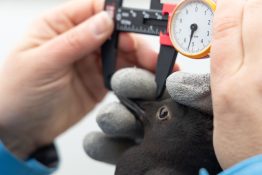As glaciers worldwide retreat due to climate change, managers of national parks need to know what’s on the horizon to prepare for the future. A new study from the University of Washington and the National Park Service measures 38 years of change for glaciers in Kenai Fjords National Park, a stunning jewel about two hours south of Anchorage. The study, published Aug.
Read more at UW News »How computer models and statistics are shaping modern ecology
When we think of wildlife ecologists, we might envision researchers traipsing through meadows, fording rivers, and tracking elusive predators on daring field expeditions. While some of these images may be accurate, those who work in quantitative ecology and conservation know that some of the most groundbreaking and essential ecological research takes place behind the computer screen, using statistics, mapping, and mathematical models.
Read more »UW Atmospheric Sciences achieves No. 1 global ranking; nearly three dozen UW subjects in top 50
Eight University of Washington subjects ranked in the top 10 and Atmospheric Sciences moved to its position as No. 1 in the world on the Global Ranking of Academic Subjects list for 2022. The ranking, released Tuesday, was conducted by researchers at the ShanghaiRanking Consultancy, a fully independent organization dedicating to research on higher education intelligence and consultation. Other UW subjects in the top 10 include oceanography at No.
Read more at UW News »‘Safety in numbers’ tactic keeps Pacific salmon safe from predators
Animals that live in groups tend to be more protected from predators. That idea might be common sense, but it’s difficult to test for some species, especially for wild populations of fish that live in the ocean. A new University of Washington study that leverages historical data has found unique support for the “safety in numbers” hypothesis by showing that Pacific salmon in larger groups have lower risk of being eaten by predators.
Read more at UW News »New study: 2021 heat wave created ‘perfect storm’ for shellfish die-off
It’s hard to forget the excruciating heat that blanketed the Pacific Northwest in late June 2021. Temperatures in Oregon, Washington and British Columbia soared to well above 100 degrees Fahrenheit, with Seattle setting an all-time heat record of 108 degrees on June 28. During the heat wave, also called a heat dome, scientists and community members alike noticed a disturbing uptick of dying and dead shellfish on some beaches in Washington and British Columbia, both in the Salish Sea and along the outer coast.
Read more at UW News »





